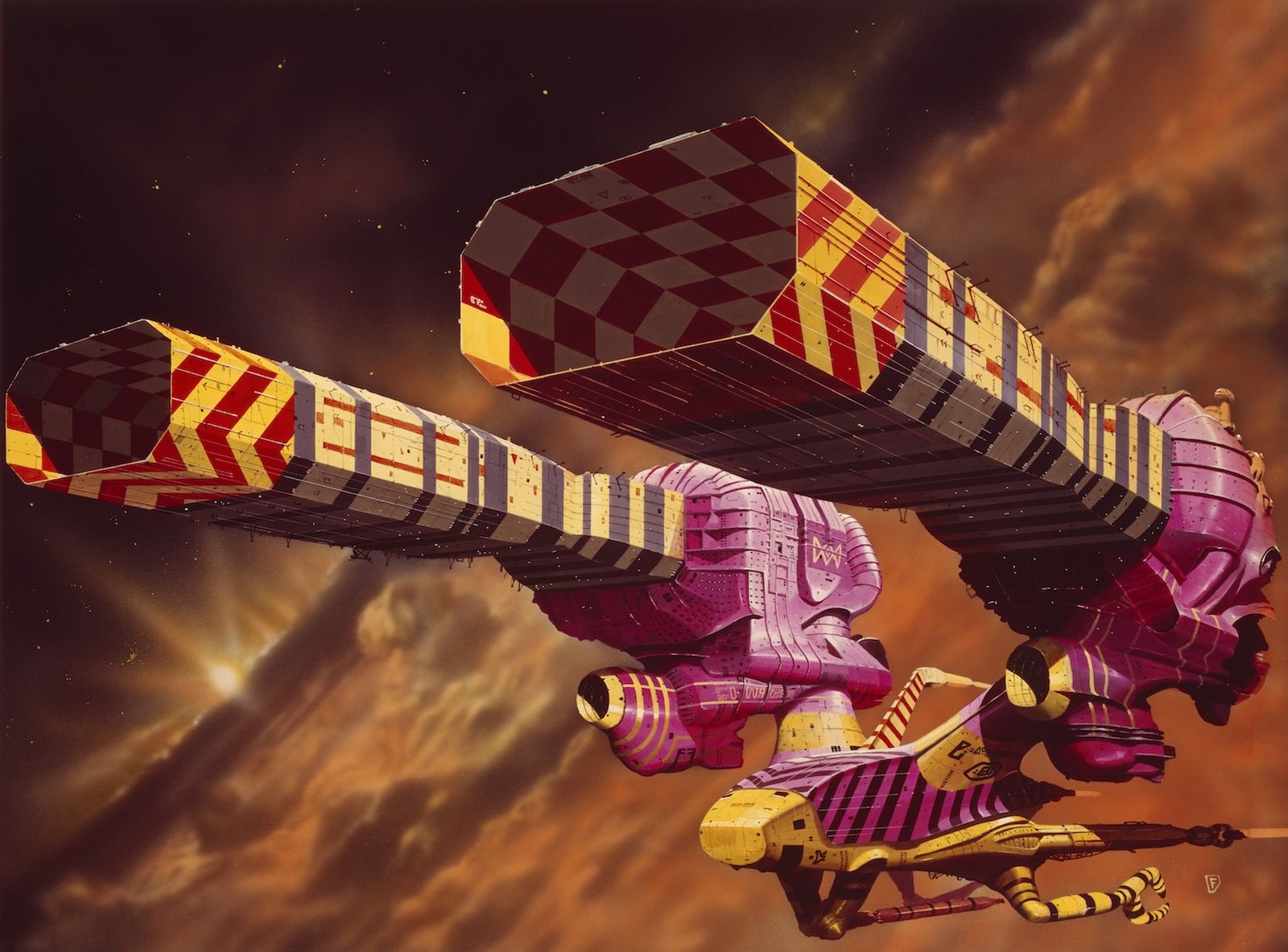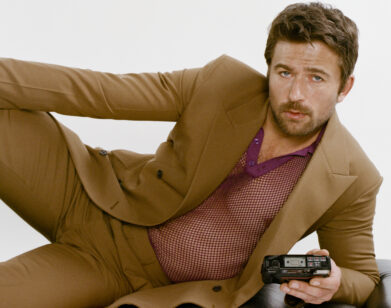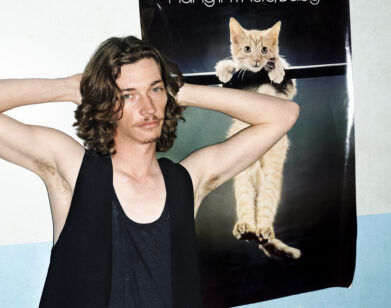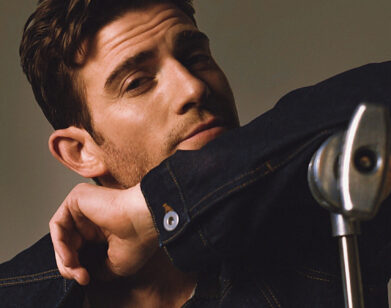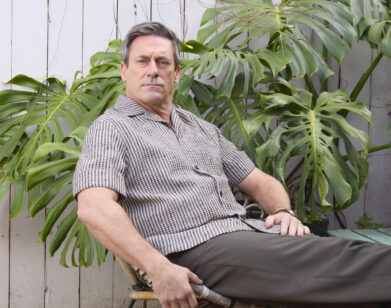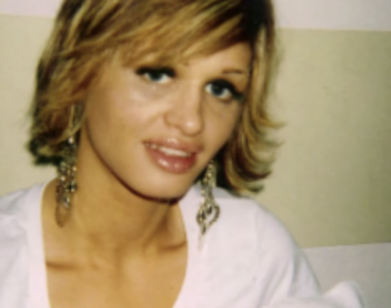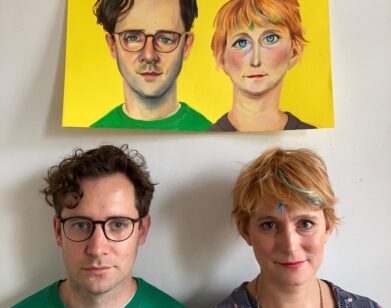Alejandro Jodorowsky’s Prophetic Vision
From the late ’70s until the early aughts, it was nearly impossible to see some of the films of Alejandro Jodorowsky, due to a rights embargo keeping them out of circulation. But if glimpses were had, the surreal, troubling, entrancing, puzzling, orgiastic, and mind-altering tableaux created by the iconoclastic director would relay a singular, beautifully chaotic vision.
The origin story of the 85-year-old, Chilean-born filmmaker, poet, writer, theater performer, comic book maker, student of the tarot, and ambassador of a certain spiritual mysticism, is a sprawling one that meanders through time, place, and medium. The young Jodorowsky left his hometown of Tocopilla to join an avant-garde theater troupe, moved to Paris and studied mime, then to Mexico to write plays, publish a comic strip, and make his first film, the riot-inciting and subsequently censored Fando y Lis (1968), before entering the international countercultural consciousness with his 1970 surreal Western El Topo (which saw Jodorowsky reborn as the “father of the Midnight Movie”) and the even more hallucinogenic enlightenment epic The Holy Mountain (1973).
In 1974 Jodorowsky teamed up with the young French producer Michel Seydoux for a project designed to awaken a new level of consciousness for its audience—an adaptation of Frank Herbert’s sci-fi odyssey Dune (which was realized by David Lynch a decade later), starring his son Brontis, Mick Jagger, Orson Welles, and Salvador Dalí (who demanded payment of $100,000 per minute onscreen), with a soundtrack provided by Pink Floyd and French progressive rock band Magma, storyboards by French comic strip draftsman Moebius, art by H.R. Giger (later a contributor to Ridley Scott’s Alien), and a screenplay written by sci-fi and horror maestro Dan O’Bannon. After two years of preparation, the film, due to Hollywood’s appraisal of the scope, ambition, and of the supposed lack of financial viability of the project, was never completed, save for a complete set of storyboards in Jodorowsky’s possession, which he reimagined as a comic.
The journey of Dune under the aegis of Jodorowsky is the subject of a new documentary, Jodorowsky’s Dune. Directed by filmmaker Frank Pavich and opening today, the film is an account of the Jodorowsky’s hypnagogic opus that never was. After not speaking for thirty years, and as a result of reuniting during the making of documentary, Jodorowsky and Seydoux collaborated on a new venture, The Dance of Reality, a dreamlike adaptation of his autobiography, set in Jodorowsky’s Chilean hometown, which will be released in May.
Interview spoke to Jodorowsky at his home in Paris, by phone last month.
COLLEEN KELSEY: In the beginning of Jodorowsky’s Dune, you said that you wanted the film you were about to create to act as a “prophet” for its audience. What do you consider to be the strongest power that cinema has over us?
ALEJANDRO JODOROWSKY: Movies have an enormous power to open the mind and the heart and everything. You are sitting and seeing something moving in front of you, and then your mind goes into a trance. You are completely there. It’s a real great art; it’s not only a business. It’s to open the mind, to understand this mystery within reality. This is why we need it. Movies can help.
KELSEY: In your own films, are you interested in representing what most people consider to be reality or pushing those limits to awaken consciousness, or something outside what we conceive to be collective reality?
JODOROWSKY: Every mind has another vision of reality. There is not a common reality. Every person thinks he is like the others, but every person is different, living in his own psychology. I don’t know how to say it really—the subjectivity. The world is how we see the world. Some people see the world good, the other people see the world bad. Every person has an idea of the world with a subjective [viewpoint]. We are trying to make a union of the mind because humanity are not individuals; we are collective. And if we have difference, we have wars all the time. We have crisis. We need to open our mind. This is the only solution we have.
KELSEY: You said in the film that you hadn’t read the Dune, the novel, before you started the project.
JODOROWSKY: I was in New York. I wanted to be free of the problems I had [after El Topo and The Holy Mountain]. They offered me to make a history of all pornographic pictures, they offered me to make [a film about] serial killers—I wanted to do something different. And then, Michel Seydoux called me from Paris, “What do you want to do?” and then I say, “I want to make Dune!” I didn’t read it, it’s true. But later, when I made the adaptation for the picture, I read it eventually. Then I said, “This is a literary book that has no image. I need to invite the image.” And there I start to make the picture, to put images inside.
KELSEY: The book has an incredible cult following. Why do you think people are so obsessed with this story, or with science fiction in particular?
JODOROWSKY: I don’t know if you will agree but, my life is very long. All my life, I have never found a person who really loved this world. Every person hates the world, how he is. We say, “What is money? What is politics? What is religion? What is this if not possible?” Even the planet, he is very angry now. [laughs] He is not happy.
KELSEY: People relate to it because they are always dreaming of another world?
JODOROWSKY: Yes. The imagination wants to construct the new worlds, no? Creativity is a solution. If I ask you, “What is your goal in life? How many years do you have to live before to die? How many years do you have? And what you will do with these years you have?” You have pressure there. “How you will realize a good life? How? Tell me!” Then, you start to open your mind.
KELSEY: You spent a great deal of work trying to make that film, finding the artists, the actors, etc., but when the film ended up not being made, how did that affect your creative process going forward?
JODOROWSKY: When you put a great amount of energy and hope in a big project, you can be destroyed if you don’t do it. But myself, I see, I said: “To fail is only to see the way to fail.” And then if I didn’t do Dune, I was making comic books. Everything I wanted to do it, I did it. I did in the comic what I didn’t do it in movies. Do you know I had a project some years [ago about] the son of El Topo? But I could not convince the producers to do it. They were scared. Well, now I’m starting to do it in comics.
KELSEY: Do you feel that to make artistic cinema, you cannot cooperate with the film industry or Hollywood because of their obsession with making a profitable product?
JODOROWSKY: What is an artistic picture? An artistic picture is very simple. The creator is not the producer. The creator is not the star. The creator is the director, the person who realizes the picture, like a poet, like an artist. He is not obeying the person who says, “Do that. Don’t do that.” A star who is saying, “I am bringing the money, I can do whatever I want.” No! The creator of the picture is free to do whatever he wants, how he wants to do it. That is an artistic picture. And if the picture is not an artistic picture, it’s show, like television. Television series are very funny, but it’s a collective production. An industrial art. A car is not made by a person, it’s made by a group of creators, only to go to the market to buy your cigarettes. That is a car—they are not a big art, they are a little art. [laughs] But what happens when you finish your series on the television and run to Iron Man, or something like that? [laughs] You are empty. Inside you was tension—spiritual, psychological, physical tension—and you relax. [whistles] Two hours, you relax. But you are empty. The only things that are given to you are what you eat, and what you see in the picture. Your belly is full of garbage! [laughs] But nothing more.
Why are there new films? Because art gives to you a new conception of reality, opens your mind, opens your heart, opens your desire of action. What I am saying in this documentary, I say, “Have a dream. Fight to do a dream. Don’t ask if it is possible to do something or if not possible. Try to do it!” When you propose to you to make an impossible picture, you will lose your time, because you completely open your creativity, trying to do the impossible. We cannot change the world, but we can start to change the world.
KELSEY: You used your autobiography as a starting point for your new film, The Dance of Reality. Why was that an important story to tell or an important place to start for this film, your first in decades?
JODOROWSKY: I heal my soul with that picture. Every artist—even if they do Superman, they do Batman, and things like that—they are speaking about his life. Every person, every artist makes his life an artwork. I wanted to see what was my life when I was a child, and how I could arrange that. I had a mother who was humiliated—she wanted to be an opera singer. She never did it. In the picture, I made her sing. [laughs] I needed to hear her. I went back exactly to the place where I lived, exactly the same place. 2,000 kilometers from the capital of Chile, in the north of Chile. I went there. Then we had an interesting experience, an important experience. My father is played by my son [laughs] and that was really important for him.
KELSEY: What was it like at this point in your life to return to Chile after living abroad?
JODOROWSKY: Like an atomic bomb! A mental atomic bomb. I’m not the same. I was rejected in my town when I was a child. I suffered. And then I come [back], and I seem to be accepted by my town. The town never changed in 80 years. It’s the same. Not a new house, no nothing. For them, it was really important to be known by the world, the town. I became a hero. [laughs] And that is good!
KELSEY: I’m curious because I find these subjects very interesting, your study of the tarot and the practice of psychomagic. How do these studies affect your life and your work?
JODOROWSKY: Psychomagic, I invented that. It’s a therapy. It’s a psychological therapy. Some kind of post-psychoanalysis. Psychoanalysis is healing by words, by speaking. And I said to myself, “Words doesn’t heal. Art heals!” I came from the theater. I apply what I know in the theater to healing and to give art to the people. The tarot is because I like magic and things like that. The tarot is very mysterious. It’s a language. It’s an optical language. Not to see the future. You can learn to read the present, not the future. It’s like to speak English, to speak Spanish, to speak tarot. It’s a language.
KELSEY: Do you have any plans for a new film?
JODOROWSKY: Yes—I have half of the budget already. I am trying to start in September. It’s a kind of a Mexican gangster picture. But I will speak about a pure gangster who became insane.
KELSEY: Do you know who you would like to be in it?
JODOROWSKY: I don’t think of an actor. I think in the character, and then I search for the actor. Usually I’m thinking without names, because they will change my idea. No big egos. If I want egos—just mine. That is enough. [laughs]
KELSEY: I see that you are a very big user of Twitter.
JODOROWSKY: Yes!
KELSEY: What is your favorite thing about it? How does that format allow you to transmit ideas?
JODOROWSKY: I do poems, like haiku. Very short and very condensed. When I find Twitter, I have a limit—140 characters. This is all. I see the person speaking about how they go to the movies, what they eat, and they have a bad day. Little personal idiocies. Then I say, “Why I will not just write like literature? Like poems. Like philosophy. Like psychomagic.” Something more deep.
I start with 40 followers, now I have almost one million. I think Twitter is the literature of the 21st century. I think it’s an incredible art because when you make a book, you don’t know who reads it. But now every line, I write a million people, they read it, and then they insult me, they love me, they discuss, they give an opinion instantly, immediately. They are completely in communication, immediately. That is a real art.
KELSEY: Do you follow anyone that you are a fan of?
JODOROWSKY: Not too many because I have so many replies, I cannot follow and read the answers. Very few. Maybe 15. [laughs] Between the 15, there are three of my sons, my woman, my family, and writers, something like that. But not too much because I have no time to read all that. It’s a big art for me. For my last picture it was a big help. I needed an actor without hands. Where would I find an actor without hands? And then I say on Twitter, “I need an actor without hands.” The guy called me by telephone. If I need something difficult, I ask for it by Tweet, and I can have it.
JODOROWSKY’S DUNE IS OUT IN LIMITED RELEASE TODAY. THE DANCE OF REALITY WILL BE RELEASED MAY 23.

